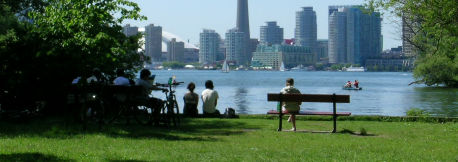
The most distinctive quality of the urban environment lies in its landscape. Each individual city has its own sense of character, unique infrastructure, and physical presence. As the urban setting becomes increasingly advanced, we are leaving behind our roots – the tree canopy coverage in the developed city is declining. At present, many of world’s greatest cities lack substantial plant life. This observation isn’t just aesthetic, it is harmful on many levels. An increase in tree canopy coverage may require some painstaking effort to succeed, but could have enormous benefit if it does. Incorporating trees into the urban environment would serve to reduce the amount of fossil fuels we burn and ease the damage of deforestation – the two main roots of climate change. Right now, homes and other buildings account for 30% of the greenhouse gas emissions in the North America. Design and sustainability, both significant community objectives, can’t be sacrificed for one another. They must work together.
The city doesn’t “breathe” as well as a forest, contributing large quantities of carbon to the atmosphere with few sources of absorption. The earth, in order to give warmth to support life, needs a reasonable amount of greenhouse gases. Carbon dioxide appears naturally in the atmosphere, exhaled by humans and involved in the photosynthesis of plants. Carbon is kept in check by a natural carbon cycle, a system which creates a balance between the carbon emitters (humans), and the carbon absorbers (plants). Oceans, land and air are all involved in the process.
After the industrial revolution, when humans began messing with the carbon levels in the atmosphere, the earth began to see increasing quantities of carbon being pumped into the system. And it’s been rising steadily since, resulting in a 1.4 degree increase in global average temperature. This might not seem like a lot, but consider the fact that the global average temperature during the last ice age was only 4 – 7 degrees colder than it is today, according to the Intergovernmental Panel on Climate Change. The increase refers to the average temperature, not explicitly presenting the extremes on either side.
The city has taken a lot less time to grow than the forests. And we can’t undo what has been built. But by adding trees into the urban landscape, we can contribute to the solution of the unbalanced carbon cycle. Placed around a house or on a rooftop, trees can cool a building by 40%. Cutting back on air conditioner reliance means a decrease in the human- made greenhouse gas hydrofluorocarbons. An appropriate mix of trees can filter 88% of air pollution in a park, or 70% in a street setting. The benefit isn’t just limited to homes and buildings. On the streets, trees slow rain fall and absorb water, reducing rain flow into our sewers. More trees on the street means less overflow from sewers into the lake.
More trees would attract wildlife, make the city more aesthetically pleasing, and create more jobs. The benefits are numerous. Trees and urban design are a winning team, combining to reconcile urban culture and nature, a gap that must be bridged in order to achieve a truly sustainable city. Restoring an eco system is slow and demanding process. And unlike simply building a condo, it is unpredictable. But adding these lasting structures to the city’s infrastructure would have a greatly advantageous impact on our environment, our resources, and our money.
The potential difficulties of this goal lie in the nature of plant life. Will the slow growth of trees be frustrating enough for us to scrap the plan and come up with yet another quick and easy solution? Most of the trees that make up the canopy in major established cities have been rooted in place for a century or so, meaning that the skinny ones planted in addition will take equally as long to reach full growth. Cultivation in the urban environment won’t be easy, either. City trees die quickly in the drought of the hot summer months, as they bake against the concrete buildings and roads. If trees are to survive in the city, they would need to be planted in large groups and carefully tended.
Cities are built primarily with humans needs in mind. They create the illusion of a world solely for us. Doubling the tree canopy in the city is within our reach, and the cultivation of these entities will force us to recognize the true value of trees. The greater the esteem we assign them, the greater the benefit they will provide. Urban design and sustainability can no longer afford to clash. A green infrastructure starts with a return to the architecture of the natural world.
Photo credit: jeltovski